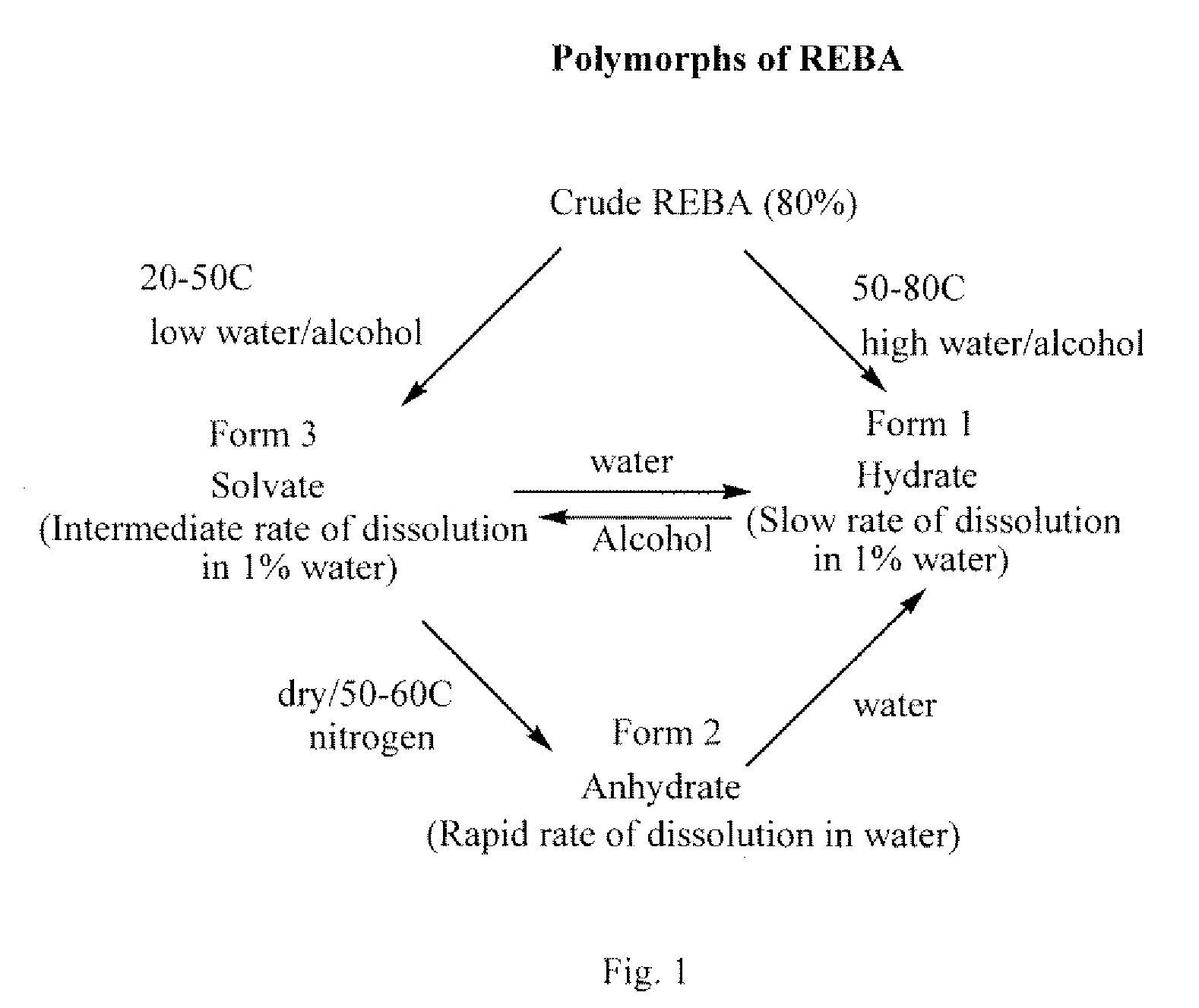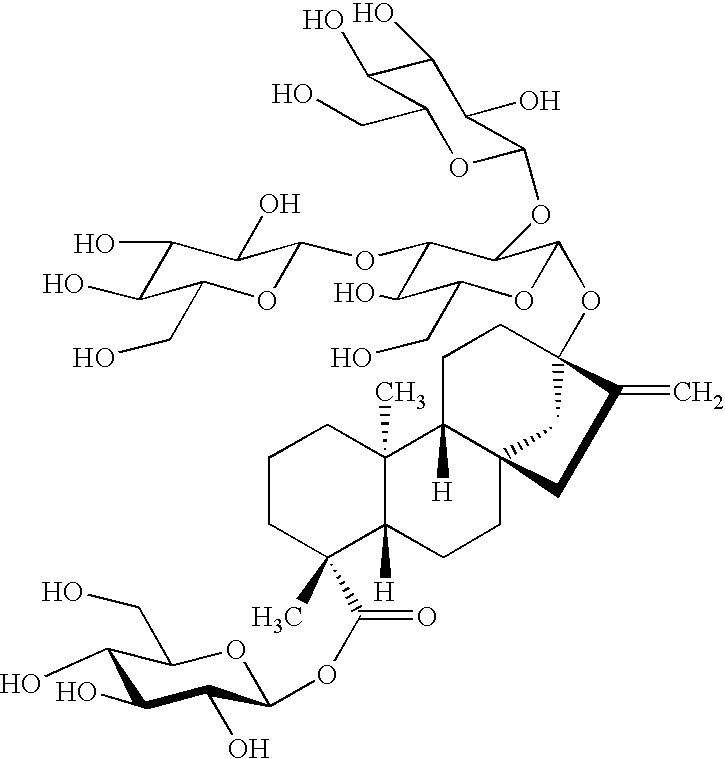Rebaudioside a composition and method for purifying rebaudioside a
a technology of rebaudioside and composition, applied in the field of rebaudioside a composition and purification method, can solve the problems of steviol glycoside, affecting the purity of rebaudioside, and generally failing to provide sufficient purities of rebaudioside, etc., and achieves high purity and high yield
- Summary
- Abstract
- Description
- Claims
- Application Information
AI Technical Summary
Benefits of technology
Problems solved by technology
Method used
Image
Examples
examples
[0042]The purity of the rebaudioside A compositions described in the examples hereinbelow was determined using HPLC. Methods of performing HPLC analysis are well known to those of ordinary skill in the art. Briefly described, the HPLC analysis was performed using a ZORBAX NH2 column (150×4.6 mm, 5 μm) at a temperature of 30° C. The mobile phase comprised a solution of 20% buffer (0.0125% acetic, acid and 0.0125% ammonium acetate) and 80% acetonitrile at a flow rate of 1.5 mL / min. 12 μL of each sample was injected in duplicate and the sample was analyzed using a UV detector at 210 nm (4 nm bandwidth) with a reference of 260 nm (100 nm bandwidth). The HPLC analysis required a run time ranging from 40 to 60 min.
[0043]A buffer solution of 0.0125% acetic acid and 0.0125% ammonium acetate was prepared by dissolving 0.125 g ammonium acetate and 125 μL glacial acetic acid in one liter of water. The retention time of rebaudioside B was adjusted by varying the ratio of ammonium acetate to ace...
example set a
[0051]Experimental conditions of the crystallization are summarized in Tables 4 and 5 and the results are summarized in Table 6.
[0052]The low purity rebaudioside A compositions (50 g) were combined with an organic solvent while stirring at a mixing temperature for a desired period of time to obtain a substantially clear solution. The solution was allowed to cool to room temperature (22° C.) and optionally was seeded with substantially pure rebaudioside A (>99.0%). Generally, precipitation was almost instantaneous upon cooling to room temperature. The precipitate was filtered and washed with either room temperature or cold ethanol (95%, 22° C. or 4° C.) and dried in a vacuum oven-desiccator at 50-60° C. for 2 to 4 days.
[0053]The amount of the resulting precipitate was determined and the precipitate was subjected to analytical HPLC (Agilent 1100) using the universal CAD (charged aerosol) detector to obtain a quantitative estimate of both the amount of rebaudioside A and the total amou...
example 16
[0060]Low purity rebaudioside A composition (50 g, 62%) was combined with 250 mL of ethanol (95%) at room temperature (22° C.) for 60 minutes while stirring. The solution was left at room temperature overnight while stirring. The precipitate was filtered, washed with ethanol (10-15 mL 95%, 22° C.), and dried for two days in a vacuum oven-desiccator (60° C.) to obtain 26.6 g of a steviol glycoside composition (53.2% yield) having 93% rebaudioside A and 98% total steviol glycosides.
PUM
| Property | Measurement | Unit |
|---|---|---|
| Temperature | aaaaa | aaaaa |
| Temperature | aaaaa | aaaaa |
| Temperature | aaaaa | aaaaa |
Abstract
Description
Claims
Application Information
 Login to View More
Login to View More - R&D
- Intellectual Property
- Life Sciences
- Materials
- Tech Scout
- Unparalleled Data Quality
- Higher Quality Content
- 60% Fewer Hallucinations
Browse by: Latest US Patents, China's latest patents, Technical Efficacy Thesaurus, Application Domain, Technology Topic, Popular Technical Reports.
© 2025 PatSnap. All rights reserved.Legal|Privacy policy|Modern Slavery Act Transparency Statement|Sitemap|About US| Contact US: help@patsnap.com


